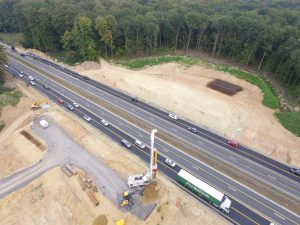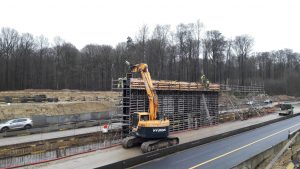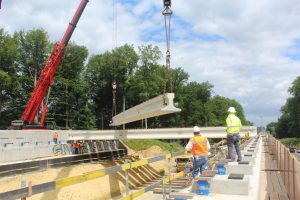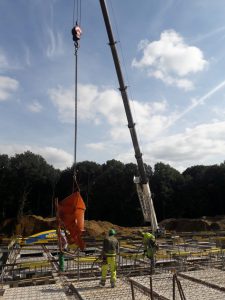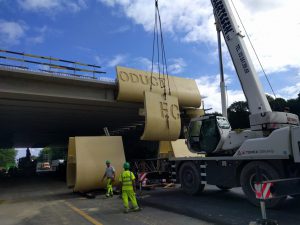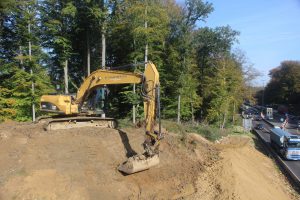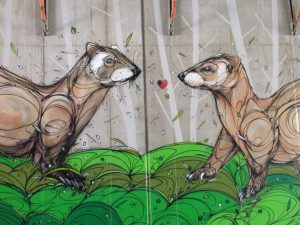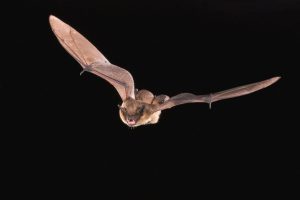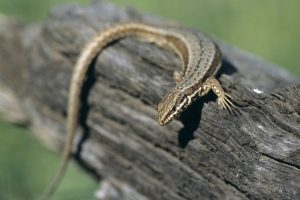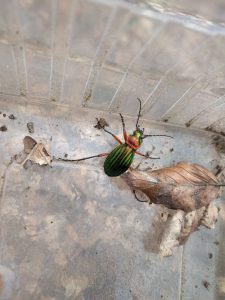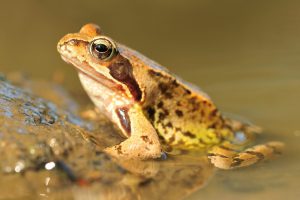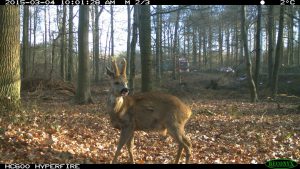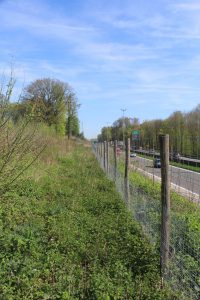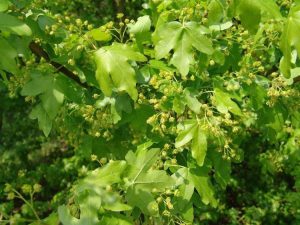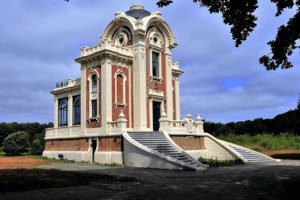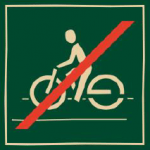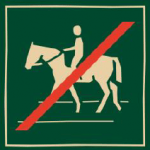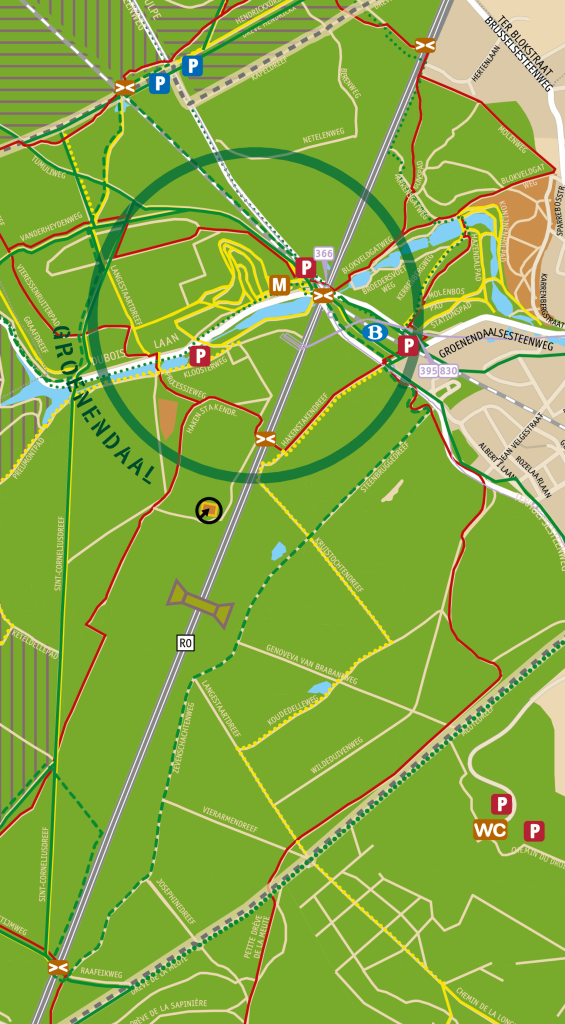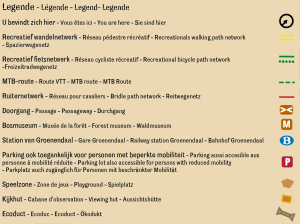Construction of the ecoduct
You are close to the first ecoduct across the Brussels Ring Road, located next to the former horses’ racecourse of Groenendaal. The Ecoduct was built between May 2016 and May 2018 by BAM Contractors NV on behalf of Agentschap Wegen en Verkeer and Agentschap voor Natuur en Bos. The total cost was around €6.6 million.
The preparatory works started in the summer of 2016. The slopes along the motorway and top layer of the soil were carefully excavated and stockpiled on site. This valuable soil with local seeds and humus was later put back on top and around the bridge. Temporary lanes were constructed to minimise disruption to traffic during the work.
In the winter of 2016 – 2017, 122 foundation piles with a diameter of 1 metre were drilled (40 per abutment, each 16.7 metres deep, and 42 for the central pillar, each 11.5 metres deep). The reinforcement and concrete work of both abutments and central pillar followed in the spring of 2017 (photo 2).
©Life+ OZON – Top view of foundation works, stockpiled local soils and temporary roadways
©Life+ OZON – Formwork for the central pillar
In the summer of 2017, 58 girders were placed. One beam weighs 40 tonnes and has a length of around 25 metres. First, the span was placed over the inner ring (racecourse side) so that all traffic could then be routed below it and the same work could be done on the side of the outer ring.
This created a bridge deck of around 3000m²: 60 metres wide by 50 metres long. The edges of the bridge deck were trimmed with yellow decorative border elements. The colour refers to the local sandy soil Brusseliaan (also called sulfur), characteristic of the Sonian forest.
©Life+ OZON – Pouring concrete on top of the bridge deck
©Life+ OZON – Installation of decorative edge elements
During the works, a total of around 100,000m³ of soil was brought in from neighbouring construction sites. This soil replenishment ensures a flowing connection to the surrounding landscape and makes the bridge accessible for the many target species.
©Life+ OZON – Earth moving around the ecoduct
Both sides of the central pillar were coloured by graffiti artist DZIA. The animals depicted such as bats, ground beetles, amphibians and mammals are the ecoduct’s target species.
©Life+ OZON – Graffiti by DZIA on central pillar
Construction on top of an ecoduct
Ecoducts, ecotunnels and fauna tubes are constructed to enlarge the fragmented habitat of animals. An ecoduct is the intervention with the widest ecological effect. Its size and well-considered implantation in the landscape make it possible to create an appropriate layout and access that can be enjoyed by several animal species at the same time. This is certainly the case with the Groenendaal viaduct.
The slopes next to the yellow decorative edges shield the bridge deck from the light of passing cars. It creates a pleasant environment for light-scarce bats that have been observed in the area. The southern orientation of these embankments allows reptiles such as the viviparous lizard (Zootoca vivipara) to sunbathe and find food on them. They are dotted with flowers that attract countless insects, caterpillars and spiders that these reptiles are fond of.
A green screen of shrubs including hazel (Coryllus avellana), spruce (Rhamnus frangula) and blackthorn (Prunus spinosa) will be planted next to the embankments. These trees help darken the bridge deck and serve as food trees for bees and birds or as host plants for butterflies and moths. The latter are on the menu of bats. Ground beetles and small mammals find shelter in this shrubbery.
©Yves Adams – Bats such as the lesser kite find shelter for light, landmarks and food around and on top of the ecoduct
A series of tall trees such as winter lime (Tilia cordata) and pedunculate oak (Quercus robur) provide a linear structure on top and around the bridge. Bats observed in the vicinity such as the pipistrelle (Pipistrellus nathusii) and the white-fronted bat (Eptesicus serotinus) orient themselves on such line elements.
A continuous bank of stumps and logs connects the two sides of the road. Reptiles can take shelter, warm up and find food on and between this dead wood. The numerous species of ground beetles already observed in the vicinity of the bridge can nest in it.
©Ludo Goossens – Sunning viviparous lizard on dead wood
©Andreas Baele – Golden shag beetle, rare species of ground beetle observed in the vicinity of the ecoduct
Pools provide a sufficiently humid habitat for amphibians. They are located on both sides and connected by a wet zone on top of the bridge. Further on in the forest, ponds have been created which serve as stepping stones to the ecoduct and the other side of the motorway.
©Yves Adams – Brown frog (Rana temporaria) in pool
The open area on top of the bridge also makes it accessible to a larger mammal such as the roe deer, which is naturally rather shy and likes to keep an eye on things.
©Life+ OZON – Deer observed along R0 near Groenendaal racecourse
Installation around ecoduct
Along the motorways R0 (ring around Brussels) and the E411 through the Forêt de Soignes, a total of 24 kilometres of ecorest was installed. This fence connects several crossing points under (ecotunnels and fauna tubes) and over the motorways (ecoduct and tree bridge). The grid has a double function: guiding animals to safe crossing points and creating a safe traffic situation for the tens of thousands of motorists who drive through the Sonian forest every day. The grid is two metres high, buried in the ground, with fine mesh at the bottom and amphibian screens at the entrances of the ecoduct. In this way, we guide the various target species in the right direction.
©Life+ OZON – Ecoraster at R0 through the Sonian Forest
A herd of about 8 Scottish highlanders graze on about 24 hectares (or 48 football pitches) of grassland, rough grazing and forest around the west side of the ecoduct. These cattle survive year in year out on their own in the countryside. They keep the landscape half-open by pruning, eating and trampling down woody plants during the germination phase. By kicking open the closed grass cover, they also stimulate the development of all kinds of herbs and woody plants. They disperse seeds through their fur and their droppings. Their droppings do not contain any medicines, so mushrooms and dung beetles take full advantage of them.
In 2017 and 2018, around 10,500 bushes and trees were planted in the area around the ecoduct. Planted species such as Gelderland rose (Viburnum opulus), Red dogwood (Cornus sanguinea), Rowan (Sorbus aucuparia) and Field maple (Acer campestre) provide food for insects, birds and mammals. With a little help from the Scottish highlanders, these will spread further in a natural way in the coming years, allowing the former racecourse of Groenendaal to evolve further into a semi-open grassland with species-rich forest edges that contribute to the biodiversity of the Sonian Forest.
©Paul Busselen – The flowers and fruit of the Field Maple are loved by bees and other insects and bird species
A number of buildings in the vicinity of the ecoduct remind us of the former racecourse of Groenendaal. Today, they serve as habitats for bat species observed in the area, such as the wood bat (Nyctalus leisleri). The attic of the Royal Lodge was set up as a summer residence and the cellars of the demolished grandstand as a winter residence. They were made inaccessible to humans.
©Life+ OZON – The attic of the royal lodge was converted into a summer home for bats
Inaccessibility of the ecoduct
An ecoduct only functions properly when the various functions for animals are fulfilled. Unfortunately, man can sometimes spoil the fun by chasing animals away unknowingly, leaving behind traces (of scent) that frighten animals, destroying shelters or taking food away. We are counting on your sense of responsibility and good will not to walk on the bridge and to cross via the tunnels provided in the area. In this way, together we will respect the natural habitat of animals on and around the bridge.
We will gladly keep you further informed about the ecoduct and the OZON defragmentation project via sonianforest.be/lifeozon
We will gladly keep you further informed about the ecoduct and the OZON defragmentation project via sonianforest.be/lifeozon

